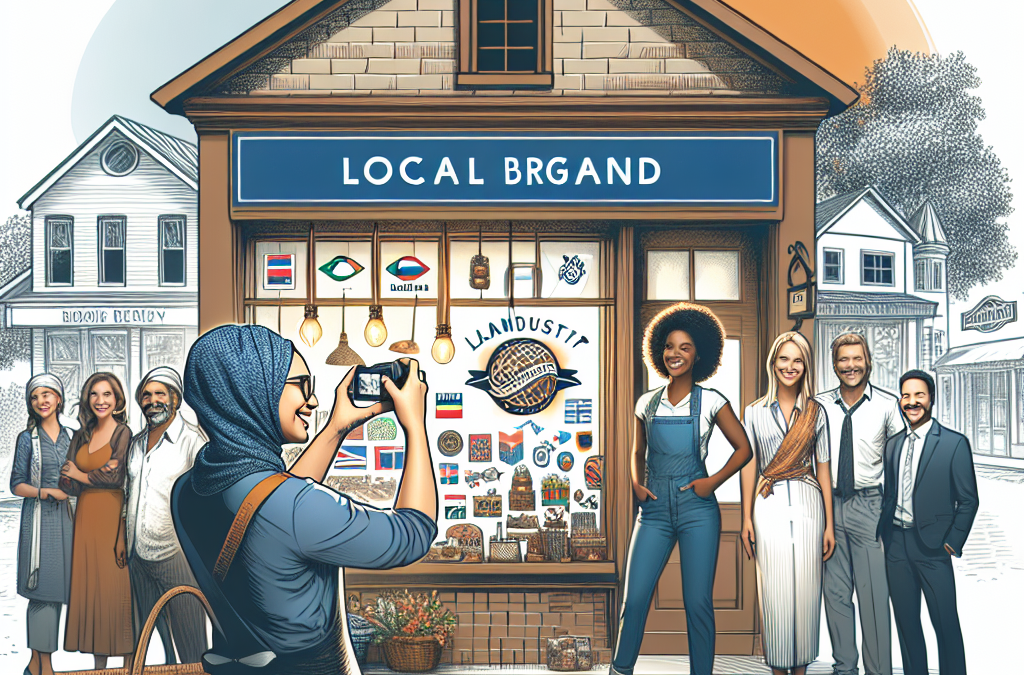Understand Your Audience
Who Are They?
When I first started in branding, I realized the importance of understanding who I was talking to. If you don’t know your audience, how can you connect with them? It’s like trying to hit a target in the dark. I spent time researching local demographics, attending community events, and simply talking to people. This groundwork laid the foundation for everything that followed.
Knowing your audience means knowing their values, lifestyles, and what makes them tick. For instance, if you’re in a small town where family is key, then the values we create in our narrative need to reflect that. By understanding these factors, the stories you tell can resonate on a much deeper level.
So, before you put pen to paper (or fingers to keyboard), invest the time in knowing your audience. It pays off—you’ll discover what they care about and how best to speak their language.
Meet Them Where They Are
Storytelling isn’t just about crafting your narrative; it’s also about how you deliver it. Once I understood my audience, I tuned into the platforms they’re using. Honestly, I hadn’t considered some channels until I did this homework—like local Facebook groups and Instagram Stories. This made my storytelling way more effective.
Don’t underestimate the power of physical locations either. Whether it’s a community center or the local coffee shop, telling stories in places they frequent helps create that deeper emotional connection. Knowing where they hang out can inform how you tell your story—it’s about contextual relevance.
Make sure that you’re not just speaking into the void. Meeting your audience where they are—both online and offline—helps foster a sense of community. And who doesn’t love a good story shared among friends?
Embrace Diversity
In my journey, I’ve learned that local audiences can be incredibly diverse. By embracing this diversity in my storytelling, I could weave together narratives that reflected the richness of the community. From different cultures, backgrounds, and experiences, everyone has a story worth sharing.
When I highlight various voices or stories from within the community, it not only builds stronger connections but also showcases my brand as inclusive and welcoming. People love to see themselves represented, and it fosters loyalty toward your brand when they feel acknowledged.
So, don’t be afraid to mix it up. Highlight stories from different perspectives and backgrounds—this can turn your local branding efforts into a vibrant tapestry that everyone wants to be a part of!
Create a Compelling Narrative
Craft a Central Theme
Every great story has a central theme or message, right? In local branding, that theme can serve as the backbone of your storytelling. I remember shifting my focus to what truly defined my local community and using that as my launching pad. Whether it’s resilience, creativity, or community spirit, defining this theme helps create a consistent voice for your brand.
The theme should resonate with your audience and reflect your brand’s character. For instance, if your theme is community resilience, then tell stories of local businesses overcoming challenges. When the audience connects emotionally, it invites them to become a part of your story.
Being genuine in your message amplifies the impact. Share experiences and anecdotes that reflect this central theme—you’ll see your brand become more relatable.
Utilize Characters
What’s a story without characters? Using relatable characters—like local business owners or community members in my case—has been transformative. These characters don’t just exist; they evoke emotion and connection. People love stories about real individuals overcoming hardship or achieving their dreams. It humanizes your brand.
I often share testimonials and experiences of local figures or even customers. It’s fantastic how much this engagement boosts brand loyalty. We’re not just selling products; we’re sharing journeys. When my audience sees themselves as part of the narrative, it builds a community.
Stories with characters are often the most memorable. They find a way to linger in the mind long after they’re shared. If you can inspire your audience through these characters, you’re moving in the right direction.
Conflict and Resolution
No one likes a boring story, right? A little conflict brings excitement to the narrative. Every local brand has its ups and downs, struggles and triumphs. By incorporating these elements, you’re not just telling a story; you’re showcasing authenticity. Remember one of my favorite local coffee shops? Their story of battling against a big chain while maintaining quality and community focus brought tears and cheers from the locals.
Showcasing conflict helps your audience connect deeper, and they root for you as a brand. It’s a universal human experience. The resolution of your brand’s challenges offers hope, inspiration, and a lesson learned, which can be very appealing to your audience.
Delivering a compelling story with real conflict and resolution builds an emotional rapport that traditional marketing just can’t achieve. Your audience will feel part of the journey, and that’s truly powerful.
Engage Through Multiple Channels
Social Media
Man, social media is a game changer in storytelling for local brands! Platforms like Instagram and Facebook have given us the ability to reach individuals in personal ways. I’ve learned to leverage visuals and videos to enhance my storytelling. A well-captured moment can tell a thousand words, right?
Using stories on platforms allows for a genuine connection, almost like the old days of storytelling—they’re spontaneous and real. My audience engages more when they see behind-the-scenes snippets or local events happening. Keeping a consistent narrative across these platforms ties everything together beautifully.
Making your stories interactive—perhaps through polls or questions—makes people feel involved. You’re not just a brand; you’re creating a relationship. Social media is, without a doubt, one of the best ways to tell your local brand story.
Community Events
Hosting or participating in community events is another fantastic storytelling avenue. I found that when people come together, they share stories and experiences that breathe life into my brand. Events provide the perfect opportunity to showcase your brand’s values and connect with your audience personally.
Consider setting up booths, sponsoring events, or even participating in local fairs. Sharing stories at these gatherings fosters not only emotional connection but also community involvement. Imagine setting up a booth where locals can share their stories—now that’s powerful storytelling!
This personal interaction creates lasting memories and positive associations with your brand. It’s not just a marketing tactic; it’s about fostering real relationships in your community.
Email Marketing
Let’s not forget about good old email! It’s still a killer way to share stories on a deeper level. Personalized emails have been remarkable for sharing brand stories, newsletters, and community highlights. I crafted a quirky and engaging storytelling format that resonated well with my audience.
With segmentation, I could tailor messages to specific audience types. Including storytelling elements relevant to different groups has significantly improved engagement rates. It puts the “you” back into your email—people love to feel special!
Don’t let email marketing feel stale. Keep it fresh, incorporate storytelling, and watch your audience’s eyes light up as they get intrigued and connected to your brand.
Measure Impact and Adapt
Analytics Insights
After all the hard work and storytelling, it is vital to measure impact. Leveraging analytics has been eye-opening for me. By reviewing engagement rates on various platforms, I could see what resonated with my audience and what missed the mark.
I personally love diving into insights like reach, shares, and comments. These metrics tell a story of their own. By keeping tabs on these numbers, I have learned to adapt my approach to keep it relevant for my audience.
Don’t forget to ask for feedback! Sometimes the best insights come directly from your audience. What inspired them? What did they love? Adjusting based on these learnings only strengthens our storytelling power.
Experiment and Test
As a marketer, I’ve learned that adaptability is crucial. I constantly experiment with different storytelling styles and formats. Be it blog posts, short videos, or multimedia presentations, each format has its charm. Testing what works best for your audience can spark unforeseen connections.
Don’t be afraid to step outside your comfort zone. I often encourage myself and my team to try something new. Creating unique narratives can stir amazing results, and it keeps the storytelling fresh.
Your brand should be evolving too! It’s all about experimenting and adapting based on what resonates best with your local audience.
Refine Your Approach
Finally, refining your storytelling approach should be an ongoing affair. Whether it’s changing the tone, focusing on new themes, or even updating the narrative occasionally, improvement leads to sustained engagement.
From my experience, periodically revisiting your stories helps you stay aligned with community values. The stories shouldn’t just be stagnant messages—they should evolve alongside the brand and the local landscape. This dynamic allows your brand to feel fresh and relevant.
So, keep learning, adapting, and improving! Your audience will appreciate the effort and loyalty will follow.
FAQ
What is the role of storytelling in local branding?
Storytelling in local branding plays a crucial role in connecting with your audience on an emotional level. It helps create meaningful narratives that resonate with local culture and values.
How can I identify my target audience?
You can identify your target audience by researching local demographics, engaging with the community, and analyzing customer feedback. Understanding their needs and preferences is key.
What platforms are best for sharing local brand stories?
Social media platforms like Instagram and Facebook, along with community events and email marketing, are fantastic for sharing local brand stories. Each platform allows for unique storytelling approaches.
Why is community engagement essential in storytelling?
Community engagement is essential as it builds trust and creates a sense of belonging. The more connected your audience feels, the more loyal they become to your brand.
How do I measure the impact of my storytelling?
You can measure the impact of your storytelling by assessing analytics such as engagement rates, feedback from your audience, and how these resonate with your brand’s goals.


